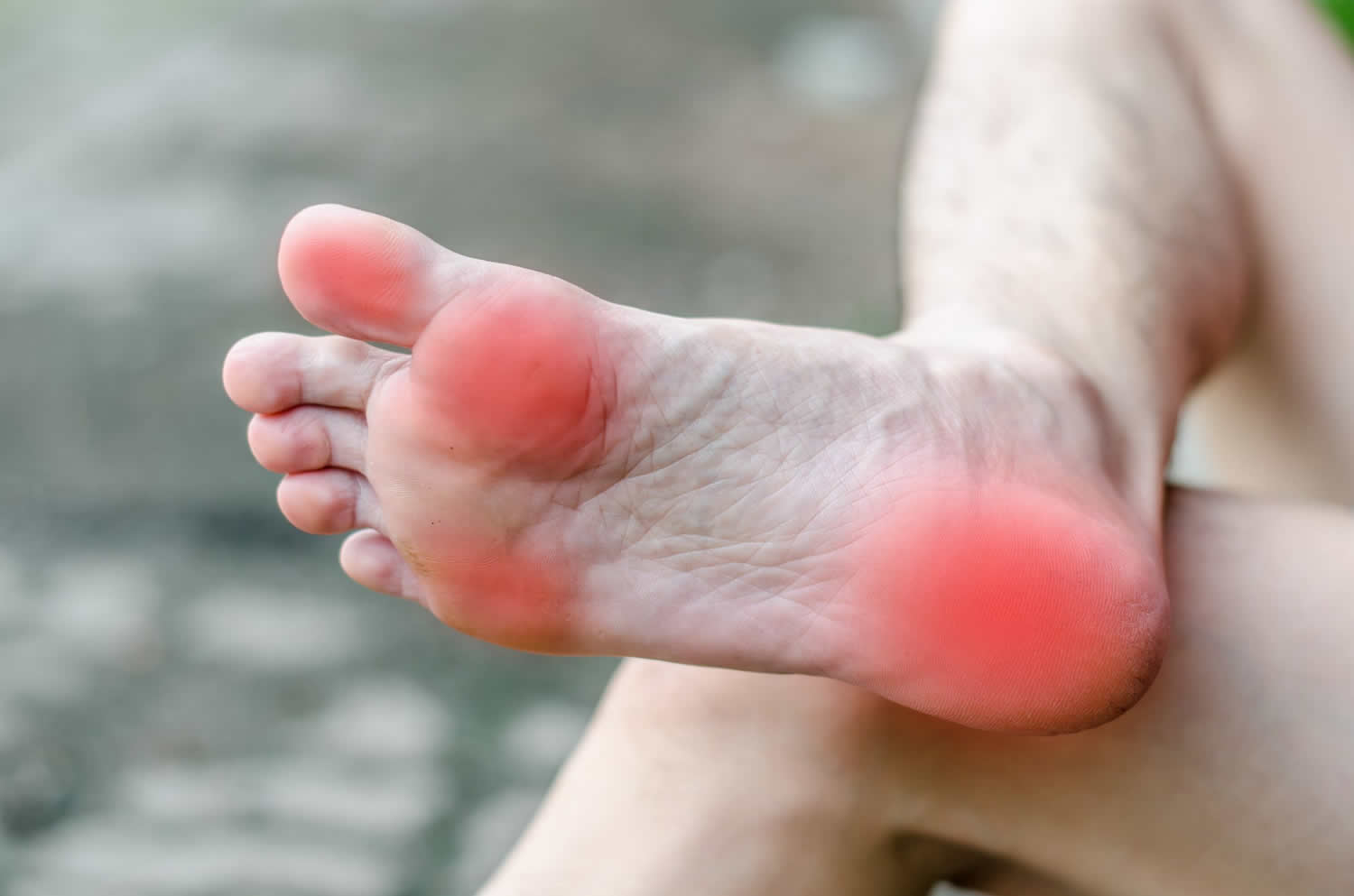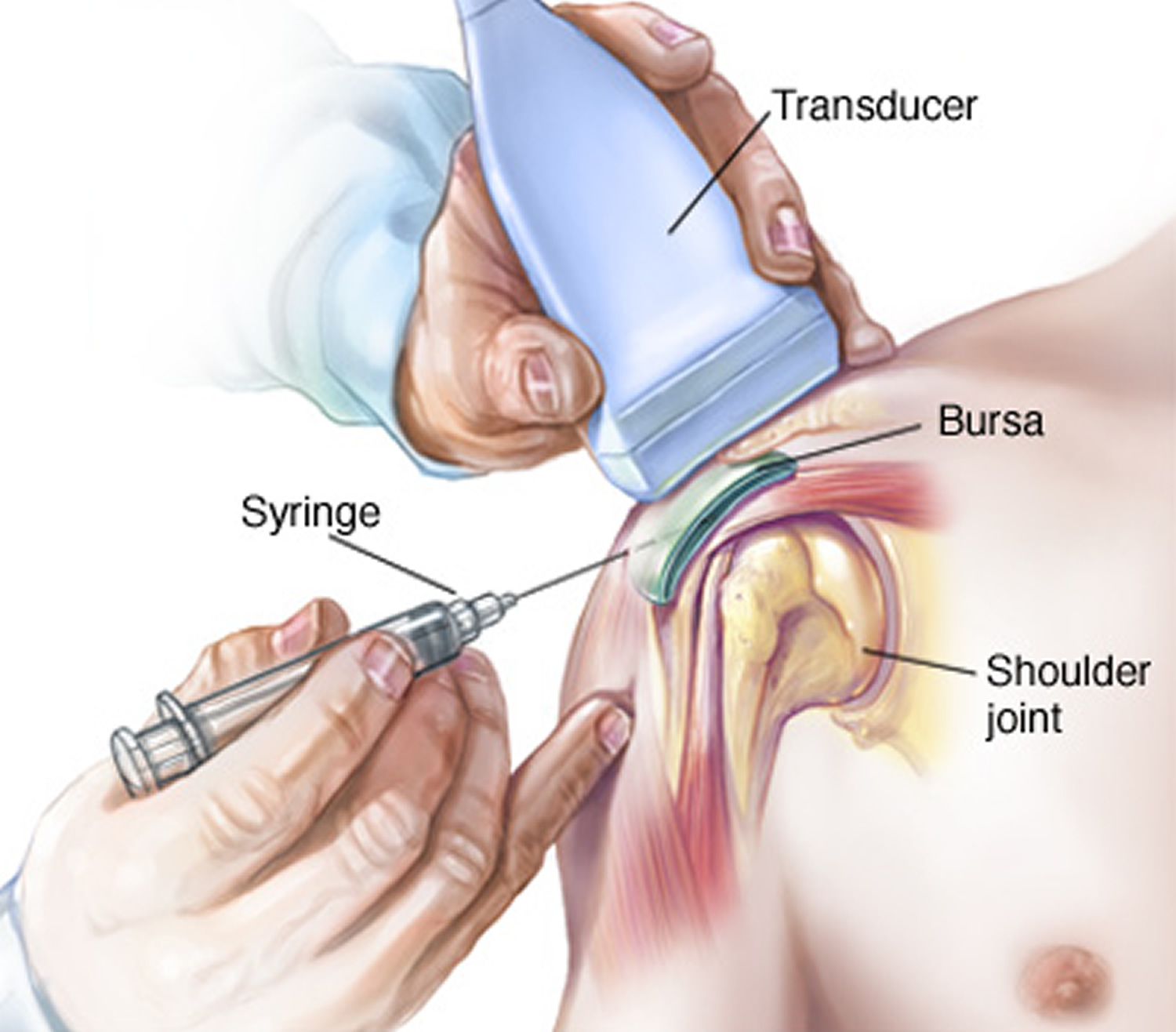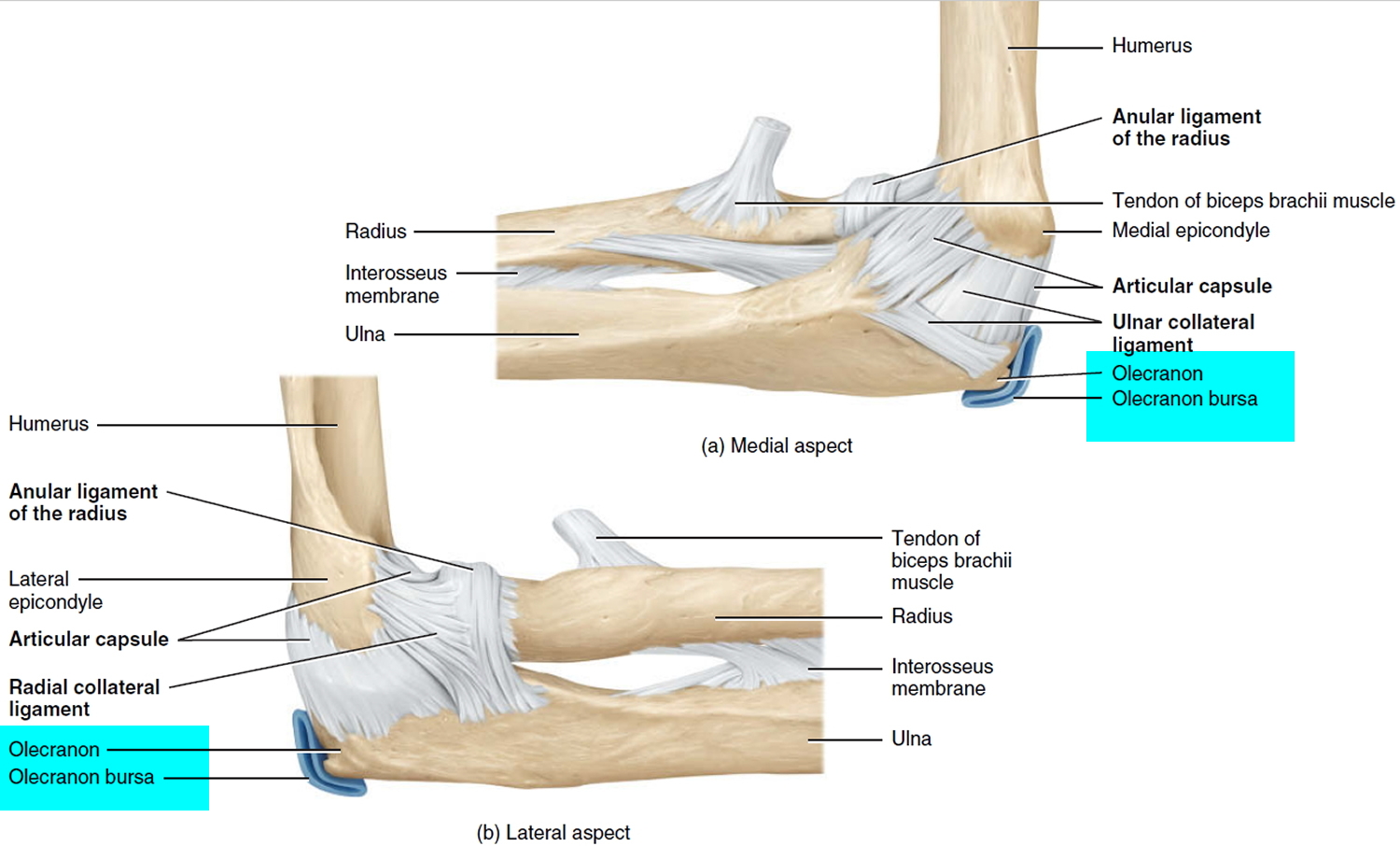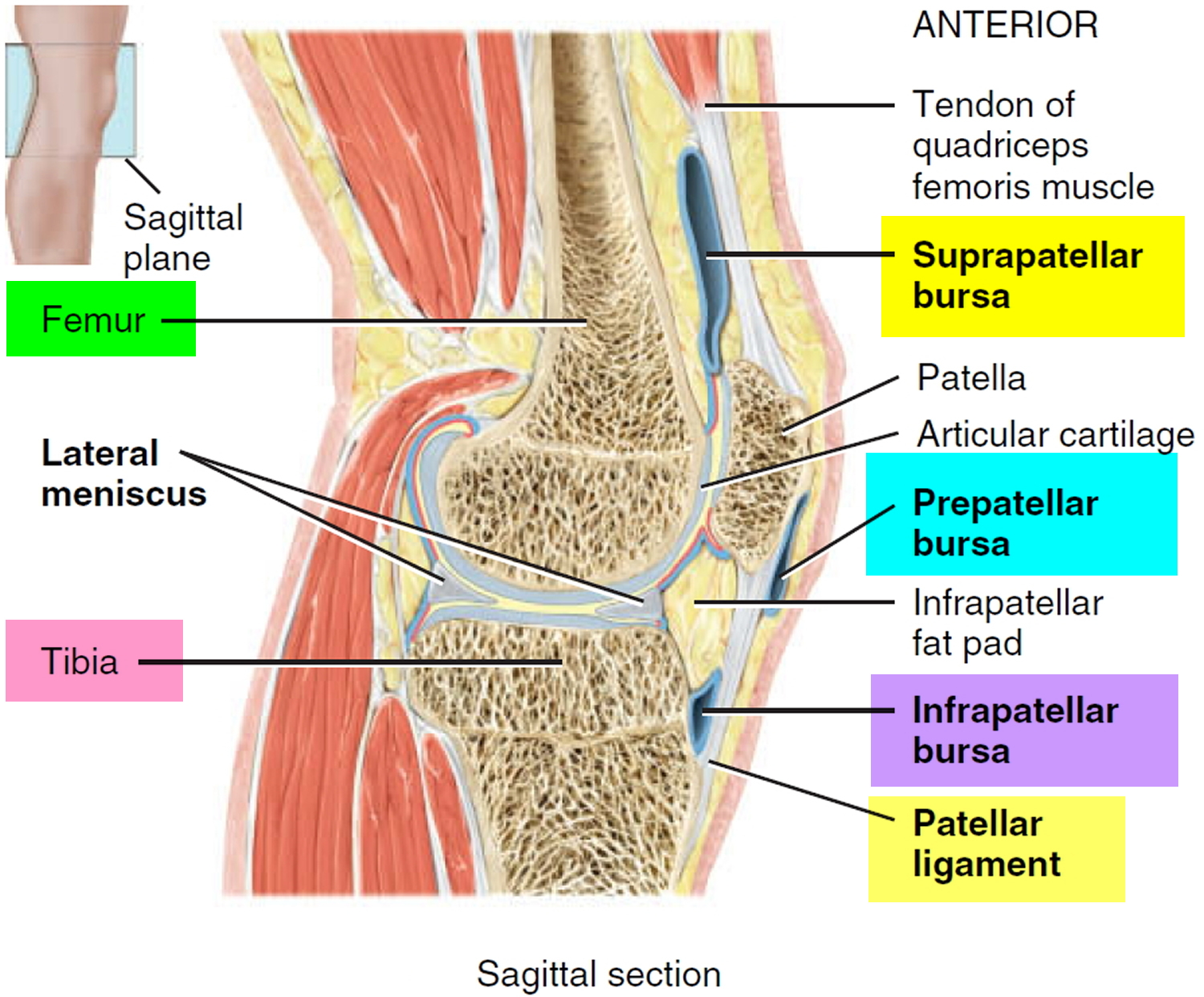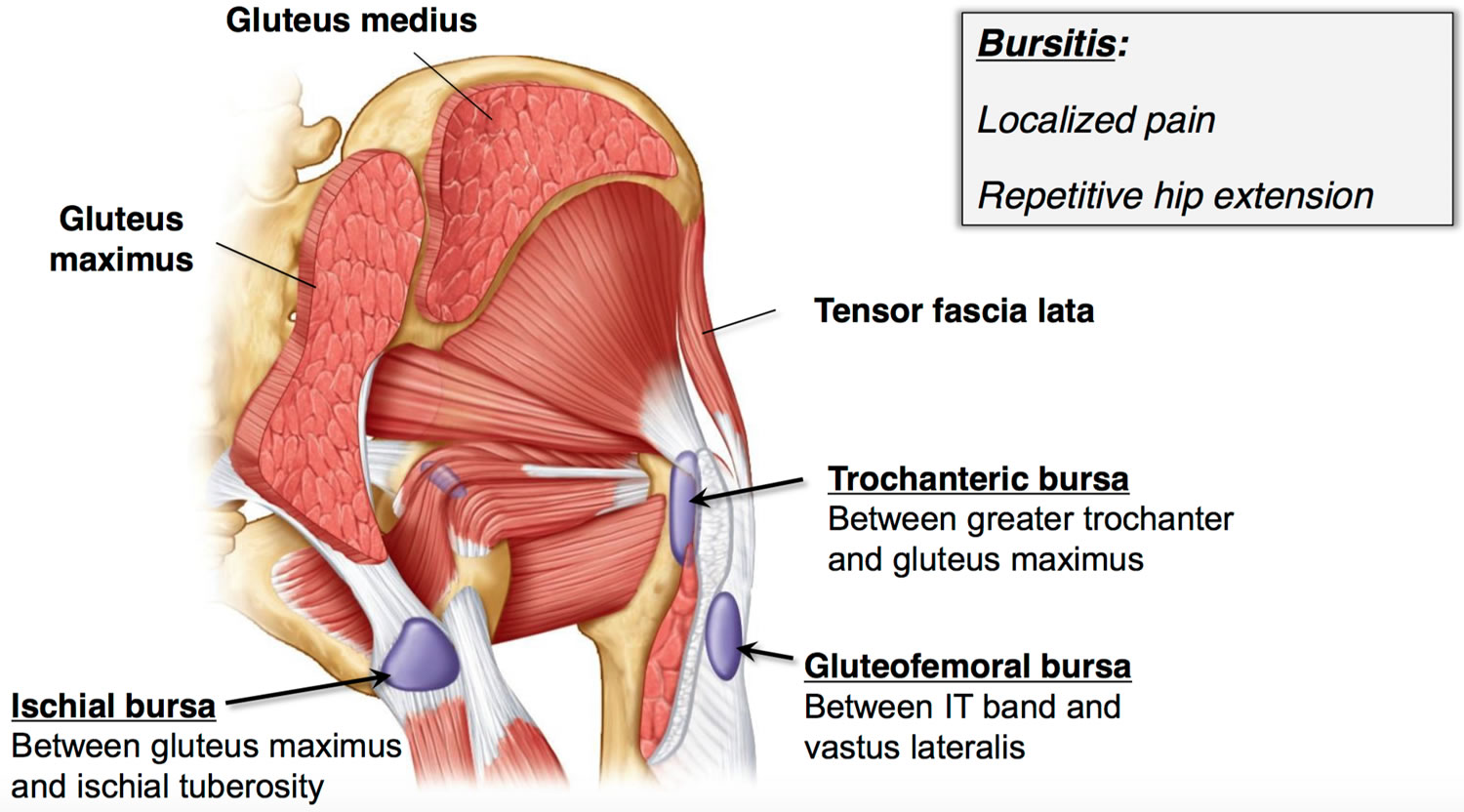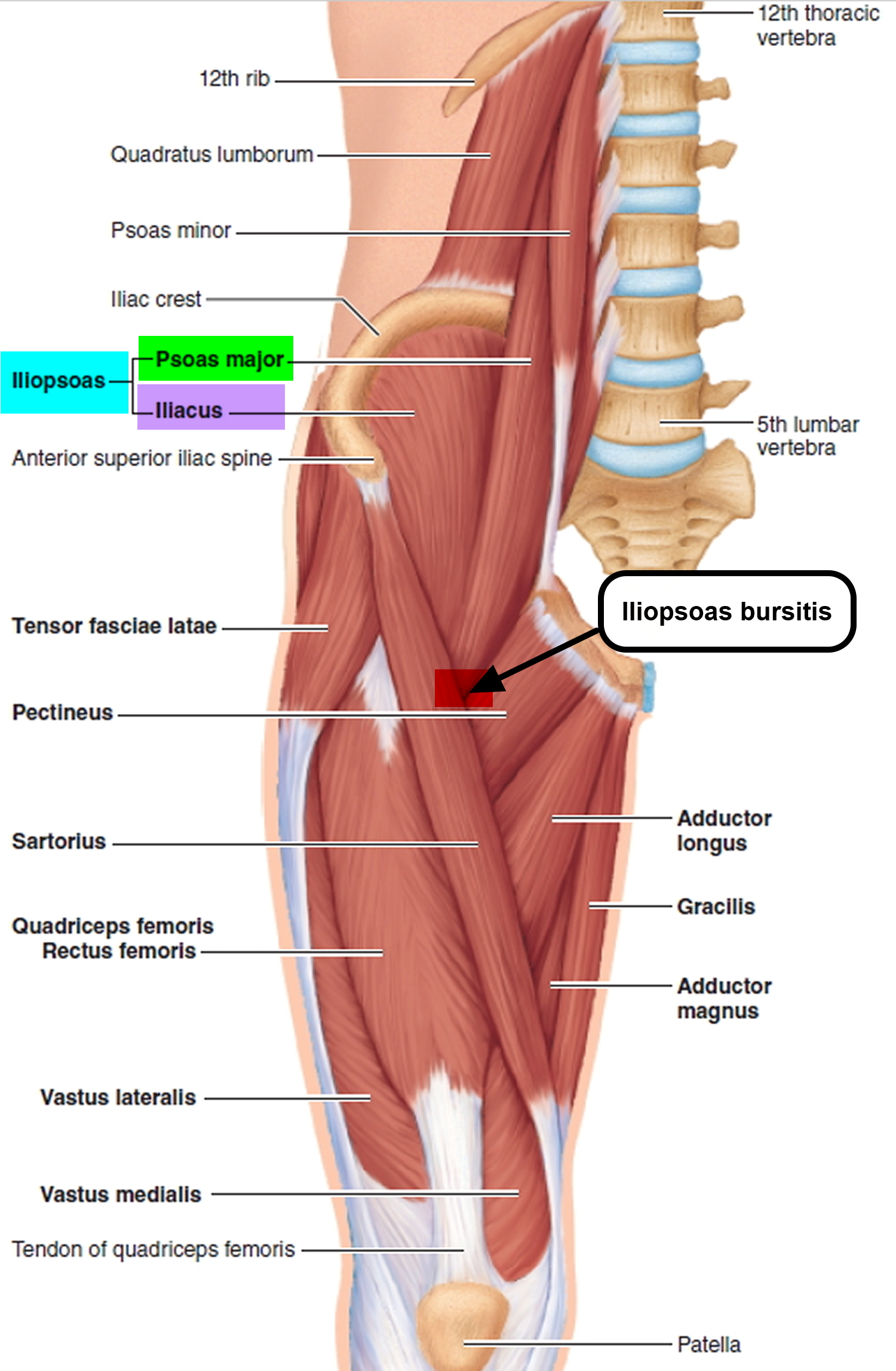Contents
What is bursitis
Bursitis is an inflammation (acute or chronic) of a bursa, usually caused by overuse of a joint or irritation from repeated, excessive exertion of a joint. The various movements of the body create friction between moving parts. A bursa is a fluid-filled synovial pouch that are strategically situated – can be deep or superficial – bursa functions as a cushion to reduce friction between structures such as tendons, bone, or skin. Bursae can be located between the skin and bones; tendons and bones; muscles and bones; or ligaments and bones. The fluid-filled bursal sacs cushion the movement of these body parts against one another. Superficial bursae are located in the subcutaneous tissue between bone and overlying skin. There are many superficial bursae in the body, but only olecranon, prepatellar, superficial infrapatellar, and subcutaneous (superficial) calcaneal bursitis have been reported. Historically, enlargement of a bursa has been called bursitis, although in many cases no true inflammatory process exists.
Symptoms include pain, swelling, tenderness, and limited movement. The first sign of bursitis is normally pain. This may get worse and may even be present when you are resting. This pain is often followed by a loss or restriction of movement about the joint. There is also tenderness and swelling. The most common cases involve the knee, a condition colloquially referred to as “house-maid’s knee” or prepatellar bursitis. However, bursitis can affect almost any joint in the body, such as the elbow, ankle or shoulder. It is more likely that a person will contract bursitis if they are involved in a job or a hobby that involves repetitive movement or constant pressure on a particular joint.
Treatment of bursitis includes rest, pain medicines, or ice. If there is no improvement, your doctor may inject a drug into the area around the swollen bursa. If the joint still does not improve after 6 to 12 months, you may need surgery to repair damage and relieve pressure on the bursa.
See a doctor if:
- your symptoms haven’t improved or are getting worse after treating it yourself for a week or two
- you have a very high temperature (fever), or you feel hot and shivery
- you can’t move the affected joint
- you have very severe, sharp or shooting pains in the joint
- excessive swelling, redness, bruising or a rash in the affected area
Shoulder bursitis
Sometimes, excessive use of the shoulder leads to inflammation and swelling of the bursa between the rotator cuff and part of the shoulder blade known as the acromion. The result is a condition known as subacromial bursitis.
Bursitis often occurs in association with rotator cuff tendinitis. The many tissues in the shoulder can become inflamed and painful. Many daily activities, such as combing your hair or getting dressed, may become difficult.
Figure 1. Shoulder bursitis
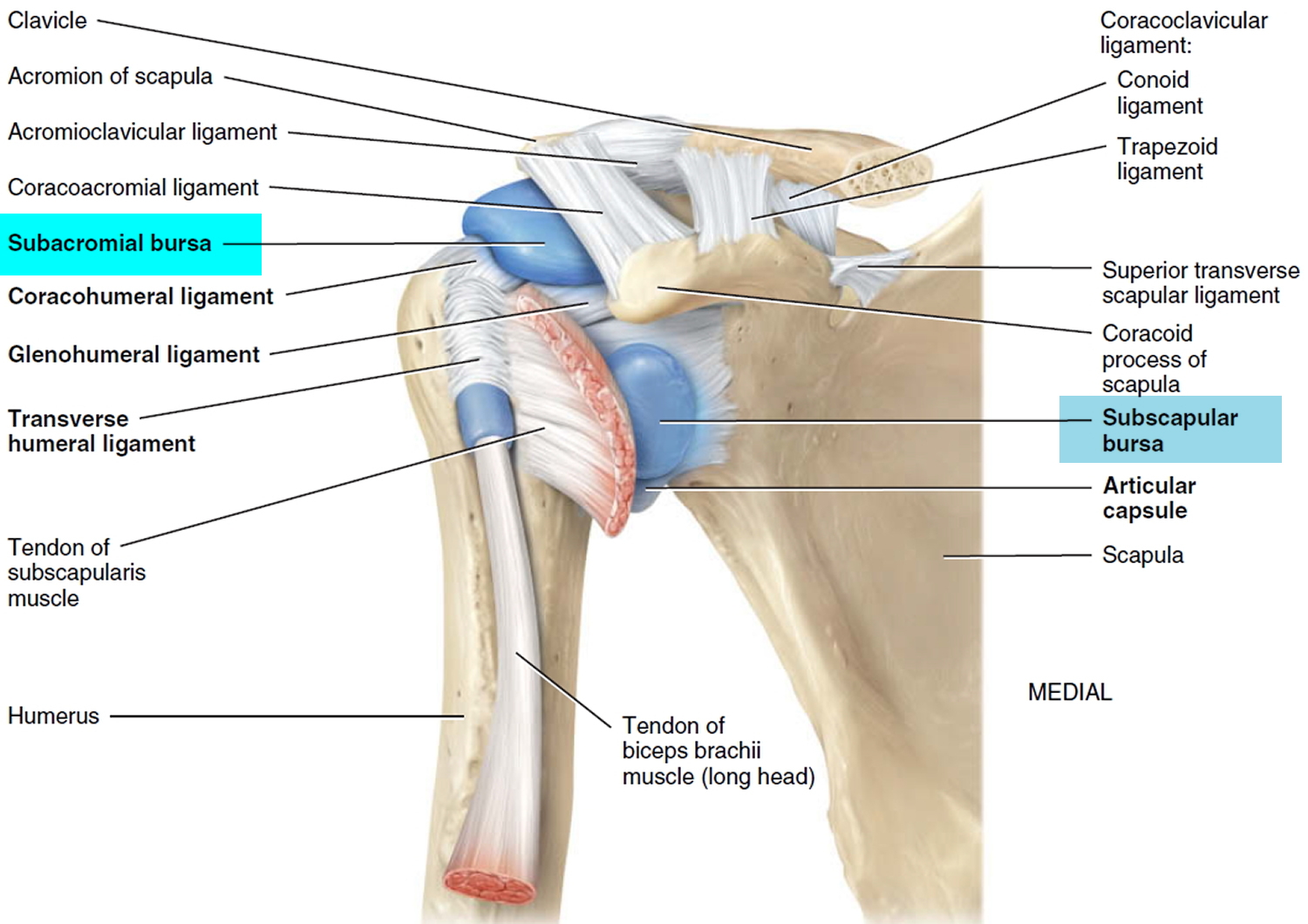 Shoulder bursitis diagnosis
Shoulder bursitis diagnosisIn the case of an acute injury causing intense pain, seek medical care as soon as possible. If the pain is less severe, it may be safe to rest a few days to see if time will resolve the problem. If symptoms persist, see a doctor.
Your doctor will conduct a thorough evaluation in order to determine the cause of your shoulder pain and provide you with treatment options.
- Medical History
The first step in the evaluation is a thorough medical history. Your doctor may ask how and when the pain started, whether it has occurred before and how it was treated, and other questions to help determine both your general health and the possible causes of your shoulder problem. Because most shoulder conditions are aggravated by specific activities, and relieved by specific activities, a medical history can be a valuable tool in finding the source of your pain.
- Physical Examination
A comprehensive examination will be required to find the causes of your shoulder pain. Your doctor will look for physical abnormalities, swelling, deformity or muscle weakness, and check for tender areas. He or she will observe your shoulder range of motion and strength.
- Tests
Your doctor may order specific tests to help identify the cause of your pain and any other problems.
X-rays. These pictures will show any injuries to the bones that make up your shoulder joint.
Magnetic resonance imaging (MRI) and ultrasound. Thes imaging studies create better pictures of soft tissues. It may help your doctor identify injuries to the ligaments and tendons surrounding your shoulder joint.
Computed tomography (CT) scan. This tool combines x-rays with computer technology to produce a very detailed view of the bones in the shoulder area.
Electrical studies. Your doctor may order a tests, such as the EMG (electromyogram), to evaluate nerve function.
Arthrogram. During this x-ray study, dye is injected into the shoulder to better show the joint and its surrounding muscles and tendons.
Arthroscopy. In this surgical procedure, your doctor looks inside the joint with a fiber-optic camera. Arthroscopy may show soft tissue injuries that are not apparent from the physical examination, x-rays, and other tests. In addition to helping find the cause of pain, arthroscopy may be used to correct the problem.
How to treat shoulder bursitis
In most cases, you will probably be able to treat shoulder bursitis at home.
The key part of at-home treatment, as with many injuries, is rest. Besides resting the affected joint or region, to help get rid of bursitis try:
- Ice: Ice used on the bursitis may reduce pain. Ice can be applied several times a day for up to 20 minutes. Icing the area will also help to lessen the swelling that can occur with bursitis.
- Heat: Putting heat (warm, not hot) on the area may reduce pain and stiffness.
- Protection: Depending on location of the bursitis, you may be able to protect or cushion the area. For example, a sling may help to rest the shoulder. Also avoid placing pressure on the bursa, which will aggravate bursitis rather than help it to heal.
- Medication: Anti-inflammatory drugs like ibuprofen may help reduce pain and swelling.
Activity Changes
Treatment generally involves rest, altering your activities, and physical therapy to help you improve shoulder strength and flexibility. Common sense solutions such as avoiding overexertion or overdoing activities in which you normally do not participate can help to prevent shoulder pain.
Treatment given by your doctor
Your doctor may also recommend injections of numbing medicines or steroids to relieve pain. Injection of a corticosteroid medication into your bursa can relieve the pain and inflammation of bursitis. In some cases, your doctor might use ultrasound to guide the injection into the affected bursa. The ultrasound’s hand-held transducer provides a live-action display your doctor can view on a monitor during the procedure.
Figure 2. Shoulder injection
Surgery
Surgery may be required to resolve some shoulder problems; however, 90 percent of patients with shoulder pain will respond to simple treatment methods such as altering activities, rest, exercise, and medication.
Certain types of shoulder problems, such as recurring dislocations and some rotator cuff tears, may not benefit from exercise. In these cases, surgery may be recommended fairly early.
Surgery can involve arthroscopy to remove scar tissue or repair torn tissues, or traditional, open procedures for larger reconstructions or shoulder replacement.
Elbow (Olecranon) bursitis
The olecranon bursa lies between the loose skin and the pointy bone at the back of the elbow called the olecranon.
Normally, the olecranon bursa is flat. If it becomes irritated or inflamed, more fluid will accumulate in the bursa and bursitis will develop.
Figure 3. Olecranon bursitis
Olecranon bursitis causes
Elbow bursitis can occur for a number of reasons:
- Trauma. A hard blow to the tip of the elbow can cause the bursa to produce excess fluid and swell.
- Prolonged pressure. Leaning on the tip of the elbow for long periods of time on hard surfaces, such as a tabletop, may cause the bursa to swell. Typically, this type of bursitis develops over several months. People in certain occupations are especially vulnerable, particularly plumbers or heating and air conditioning technicians who have to crawl on their knees in tight spaces and lean on their elbows.
- Infection. If an injury at the tip of the elbow breaks the skin, such as an insect bite, scrape, or puncture wound, bacteria may get inside the bursa sac and cause an infection. The infected bursa produces fluid, redness, swelling, and pain. If the infection goes untreated, the fluid may turn to pus. Occasionally, the bursa sac may become infected without an obvious injury to the skin.
- Medical conditions. Certain conditions, such as rheumatoid arthritis and gout, are associated with elbow bursitis.
Olecranon bursitis symptoms
Swelling is often the first symptom. The skin on the back of the elbow is loose, which means that a small amount of swelling may not be noticed right away.
As the swelling continues, the bursa begins to stretch, which causes pain. The pain often worsens with direct pressure on the elbow or with bending the elbow. The swelling may grow large enough to restrict elbow motion.
If the bursitis is infected, the skin becomes red and warm. If the infection is not treated right away, it may spread to other parts of the arm or move into the bloodstream. This can cause serious illness. Occasionally, an infected bursa will open spontaneously and drain pus.
Olecranon bursitis diagnosis
After discussing your symptoms and medical history, your doctor will examine your arm and elbow.
Your doctor may recommend an x-ray to look for a foreign body or a bone spur. Bone spurs are often found on the tip of the elbow bone in patients who have had repeated instances of elbow bursitis. Your doctor may choose to take a small sample of bursa fluid with a needle to diagnose whether the bursitis is caused by infection or gout. Blood tests are not usually helpful.
Olecranon bursitis treatment
- Nonsurgical Treatment
If your doctor suspects that bursitis is due to an infection, he or she may recommend aspirating (removing the fluid from) the bursa with a needle. This is commonly performed as an office procedure. Fluid removal helps relieve symptoms and gives your doctor a sample that can be looked at in a laboratory to identify if any bacteria are growing. This also lets your doctor know if a specific antibiotic is needed to fight the infection.
Your doctor may prescribe antibiotics before the exact type of infection is identified. This is done to prevent the infection from progressing. The antibiotic that your doctor prescribes at this point will treat a number of possible infections.
If the bursitis is not from an infection, it is treated with a number of options.
- Elbow pads. An elbow pad may be used to cushion your elbow.
- Activity changes. Avoid activities that cause direct pressure to your swollen elbow.
- Medications. Oral medications such as ibuprofen or other anti-inflammatories may be used to reduce swelling and relieve your symptoms.
If swelling and pain do not respond to these measures after 3 to 4 weeks, your doctor may recommend removing fluid from the bursa and injecting a corticosteroid medication into the bursa. The steroid medication is an anti-inflammatory drug that is stronger than the medication that can be taken by mouth. Corticosteroid injections usually work well to relieve pain and swelling. However, symptoms can return.
- Surgical Treatment
Surgery for infected bursa. If the bursa is infected and it does not improve with antibiotics or by removing fluid from the elbow, surgery to remove the entire bursa may be needed. This is often an inpatient procedure, meaning you will need to stay overnight in the hospital. This surgery may be combined with further use of oral or intravenous antibiotics.
The bursa usually grows back as a non-inflamed, normally functioning bursa over a period of several months.
Surgery for noninfected bursa. If elbow bursitis is not a result of infection, surgery may still be needed if nonsurgical treatments do not work. In this case, surgery to remove the bursa is usually performed as an outpatient procedure. The surgery does not disturb any muscle, ligament, or joint structures.
Recovery. Your doctor will apply a splint to your arm after the procedure to protect your skin. In most cases, casts or prolonged immobilization are not necessary.
Although formal physical therapy after surgery is not usually needed, your doctor will recommend specific exercises to improve your range of motion. These are typically permitted within a few days of the surgery.
Your skin should be well healed within 10 to 14 days after the surgery, and after 3 to 4 weeks, your doctor may allow you to fully use your elbow. Your elbow may need to be padded or protected for several months to prevent reinjury.
Pes anserine bursitis
Pes anserine bursitis is an inflammation of the bursa located between the shinbone (tibia) and three tendons of the hamstring muscle at the inside of the knee (see Figure 4 below). Pes anserine bursitis occurs when the bursa becomes irritated and produces too much fluid, which causes it to swell and put pressure on the adjacent parts of the knee.
Pain and tenderness on the inside of your knee, approximately 2 to 3 inches below the joint, are common symptoms of pes anserine bursitis of the knee.
Figure 4. Pes anserine bursitis
Pes anserine bursitis causes
Bursitis usually develops as the result of overuse or constant friction and stress on the bursa. Pes anserine bursitis is common in athletes, particularly runners. People with osteoarthritis of the knee are also susceptible.
Several factors can contribute to the development of pes anserine bursitis, including:
- Incorrect training techniques, such as neglecting to stretch, doing excessive hill running, and sudden increases in mileage
- Tight hamstring muscles
- Obesity
- An out-turning of the knee or lower leg
- Osteoarthritis in the knee
- Medial meniscus tear
Pes anserine bursitis symptoms
The symptoms of pes anserine bursitis include:
- Pain slowly developing on the inside of your knee and/or in the center of the shinbone, approximately 2 to 3 inches below the knee joint.
- Pain increasing with exercise or climbing stairs
Symptoms of pes anserine bursitis may mimic those of a stress fracture, so an x-ray is usually required for diagnosis.
Pes anserine bursitis treatment
Athletes with pes anserine bursitis should take steps to modify their workout program so that the inflammation does not recur.
Other treatments include:
- Rest. Discontinue the activity or substitute a different activity until the bursitis clears up.
- Ice. Apply ice at regular intervals three or four times a day for 20 minutes at a time.
- Anti-inflammatory medication. Aspirin and nonsteroidal anti-inflammatory medication (such as ibuprofen) may ease the pain and reduce the inflammation.
- Injection. Your doctor may inject a solution of anesthetic and steroid into the bursa, which often provides prompt relief.
- Physical therapy. Your doctor may recommend physical therapy for specific stretching exercises, and ice and ultrasound treatments.
If your symptoms continue, your orthopedic surgeon may recommend surgical removal of the bursa. This is typically performed as an outpatient (same-day) procedure.
If putting weight on your leg causes discomfort after the procedure, your doctor will recommend using crutches for a short time. Normal activities can typically be resumed within 3 weeks of the procedure.
Prepatellar bursitis
Prepatellar bursitis is an inflammation of the bursa in the front of the kneecap (patella). It occurs when the bursa becomes irritated and produces too much fluid, which causes it to swell and put pressure on the adjacent parts of the knee.
Figure 5. Prepatellar, suprapatellar and infrapatellar bursitis
Prepatellar bursitis causes
Prepatellar bursitis is often caused by pressure from constant kneeling. Plumbers, roofers, carpet layers, coal miners, and gardeners are at greater risk for developing the condition.
A direct blow to the front of knee can also cause prepatellar bursitis. Athletes who participate in sports in which direct blows or falls on the knee are common, such as football, wrestling, or basketball, are at greater risk for the condition.
Other people who are more susceptible to the condition include those with rheumatoid arthritis or gout.
Prepatellar bursitis can also be caused by a bacterial infection. If a knee injury breaks the skin, such as an insect bite, scrape, or puncture wound, bacteria may get inside the bursa sac and cause an infection.
Prepatellar bursitis prevention
You can help prevent bursitis by following these simple recommendations:
- Wear kneepads if you work on your knees or participate in contact sports such as football, basketball, or wrestling.
- Rest your knees regularly by stopping to stretch your legs. You may also consider switching activities on a regular basis to avoid prolonged stress on your knees.
- Apply ice and elevate your knees after a workout.
Prepatellar bursitis symptoms
- Pain with activity, but not usually at night
- Rapid swelling on the front of kneecap
- Tenderness and warmth to the touch
- Bursitis caused by infection may produce fluid and redness
Prepatellar bursitis diagnosis
- Medical History and Physical Examination
Your doctor will talk with you about your symptoms, such as the severity of your pain, how long you have had symptoms, and your risk factors for developing prepatellar bursitis.
Your doctor will likely ask questions regarding any signs or symptoms of infection, such as fever or chills. Prepatellar bursitis caused by an infection requires a different treatment plan.
During the physical examination, your doctor will inspect your affected knee and compare it to your healthy knee. He or she will palpate your knee checking for tenderness, and will also assess the range of motion in your knee and whether pain prevents you from bending it.
Tests
- X-rays. X-rays provide clear pictures of bone. Your doctor may order them to make sure there is not a fracture that is causing your symptoms.
- Other imaging tests. Computed tomography (CT) and magnetic resonance imaging (MRI) scans, and ultrasound may be obtained to check for other soft tissue injury.
- Aspiration. If your doctor is concerned about the possibility of infection, he or she may aspirate (draw fluid with a needle) the bursa and send this sample to the lab for analysis.
Prepatellar bursitis treatment
Nonsurgical treatment is usually effective as long as the bursa is simply inflamed and not infected:
- Rest. Discontinue activities that worsen symptoms. Substitute another activity until the bursitis clears up. Low impact exercise, such as cycling, is a good option.
- Ice. Apply ice at regular intervals 3 or 4 times a day for 20 minutes at a time. Each session should reduce swelling considerably if the knee is also being rested.
- Elevation. Elevate the affected leg except when it is necessary to walk.
- Medication. Take an anti-inflammatory medication, such as naproxen or ibuprofen.
If the swelling and pain do not respond to these measures, your doctor may decide to drain (aspirate) the bursa with a needle, and may inject the bursa with a corticosteroid medication. The steroid medication is an anti-inflammatory drug that is stronger than the medication that can be taken by mouth.
Infectious bursitis is initially treated with antibiotics. Surgical drainage is required if the infection does not respond to antibiotics alone.
Draining the bursa may also treat chronic swelling that causes disability, but if the swelling continues, your orthopaedic surgeon may recommend surgical removal of the bursa. After surgery, the knee should regain its flexibility in a few days and normal activities can be resumed in a few weeks.
Hip bursitis
There are two major bursae in the hip that typically become irritated and inflamed. One bursa covers the bony point of the hip bone called the greater trochanter. Inflammation of this bursa is called trochanteric bursitis (Figure 5).
Another bursa — the iliopsoas bursa — is located on the inside (groin side) of the hip (see Figure 6). When this bursa becomes inflamed, the condition is also sometimes referred to as hip bursitis, but the pain is located in the groin area. This condition is not as common as trochanteric bursitis, but is treated in a similar manner.
Figure 6. Trochanteric bursitis and hip bursitis
Figure 7. Hip bursitis – Iliopsoas bursitis
Risk Factors for Hip bursitis
Hip bursitis can affect anyone, but is more common in women and middle-aged or elderly people. It is less common in younger people and in men.
The following risk factors have been associated with the development of hip bursitis:
- Repetitive stress (overuse) injury. This can occur when running, stair climbing, bicycling, or standing for long periods of time.
- Hip injury. An injury to the point of your hip can occur when you fall onto your hip, bump your hip, or lie on one side of your body for an extended period of time.
- Spine disease. This includes scoliosis, arthritis of the lumbar (lower) spine, and other spine problems.
- Leg-length inequality. When one leg is significantly shorter than the other, it affects the way you walk, and can lead to irritation of a hip bursa.
- Rheumatoid arthritis. This makes the bursa more likely to become inflamed.
- Previous surgery. Surgery around the hip or prosthetic implants in the hip can irritate the bursa and cause bursitis.
- Bone spurs or calcium deposits. These can develop within the tendons that attach muscles to the trochanter. They can irritate the bursa and cause inflammation.
Hip bursitis prevention
Although hip bursitis cannot always be prevented, there are things you can do to prevent the inflammation from getting worse.
- Avoid repetitive activities that put stress on the hips.
- Lose weight if you need to.
- Get a properly fitting shoe insert for leg-length differences.
- Maintain strength and flexibility of the hip muscles.
Hip bursitis symptoms
The main symptom of trochanteric bursitis is pain at the point of the hip. The pain usually extends to the outside of the thigh area. In the early stages, the pain is usually described as sharp and intense. Later, the pain may become more of an ache and spread across a larger area of the hip.
Typically, the pain is worse at night, when lying on the affected hip, and when getting up from a chair after being seated for a while. It also may get worse with prolonged walking, stair climbing, or squatting.
Hip bursitis diagnosis
To diagnose hip bursitis, the doctor will perform a comprehensive physical examination, looking for tenderness in the area of the point of the hip. He or she may also perform additional tests to rule out other possible injuries or conditions. These tests can include imaging studies, such as x-rays, bone scanning, and magnetic resonance imaging (MRI).
Hip bursitis treatment
If your hip pain is related to exercising or other types of regular activity:
- cut down on the amount of exercise you do if it’s excessive
- always warm up before exercising and stretch afterwards
- try low-impact exercises, such as swimming or cycling, instead of running
- run on a smooth, soft surface, such as grass, rather than on concrete
- make sure your running shoes fit well and support your feet properly
Nonsurgical Treatment
The initial treatment for hip bursitis does not involve surgery. Many people with hip bursitis can experience relief with simple lifestyle changes, including:
- Activity modification. Avoid the activities that worsen symptoms.
- Non-steroidal anti-inflammatory drugs (NSAIDs). Ibuprofen, naproxen, piroxicam, celecoxib, and others, may relieve pain and control inflammation.Use NSAIDs cautiously and for limited periods. Talk with your doctor about the NSAIDs you use. NSAIDs may have adverse side effects if you have certain medical conditions or take certain medications.
- Assistive devices. Use of a walking cane or crutches for a week or more when needed.
- Physical therapy. Your doctor may prescribe exercises to increase hip strength and flexibility. You may do these exercises on your own, or a physical therapist may teach you how to stretch your hip muscles and use other treatments such as rolling therapy (massage), ice, heat, or ultrasound.
- Steroid injection. Injection of a corticosteroid along with a local anesthetic may also be helpful in relieving symptoms of hip bursitis. This is a simple and effective treatment that can be done in the doctor’s office. It involves a single injection into the bursa. The injection may provide temporary (months) or permanent relief. If pain and inflammation return, another injection or two, given a few months apart, may be needed. It is important to limit the number of injections, as prolonged corticosteroid injections may damage the surrounding tissues.
Surgical Treatment
Surgery is rarely needed for hip bursitis. If the bursa remains inflamed and painful after all nonsurgical treatments have been tried, your doctor may recommend surgical removal of the bursa. Removal of the bursa does not hurt the hip, and the hip can function normally without it.
A newer technique that is gaining popularity is arthroscopic removal of the bursa. In this technique, the bursa is removed through a small (1/4-inch) incision over the hip. A small camera, or arthroscope, is placed in a second incision so the doctor can guide miniature surgical instruments and cut out the bursa. This surgery is less invasive, and recovery is quicker and less painful.
Both types of surgeries are done on an outpatient (same-day) basis, so an overnight stay in the hospital is not usually necessary. Early research shows arthroscopic removal of the bursa to be quite effective, but this is still being studied.
Rehabilitation
Following surgery, a short rehabilitation period can be expected. Most patients find that using a cane or crutches for a couple of days is helpful. It is reasonable to be up and walking around the evening after surgery. The soreness from surgery usually goes away after a few days.
Heel bursitis
It is an inflammation of the heel bursa (retrocalcaneal bursa). It causes includes; landing awkwardly or hard on the heels and pressure from footwear. Heel bursitis pain is typically felt either deep inside the heel or behind the heel where the Achilles tendon inserts into the heel bone (retrocalcaneal bursitis). Occasionally the Achilles tendon may swell. As the day goes by, the pain usually gets worse.
Bursitis involving the affected heel causes pain in the middle of the undersurface of the heel that often worsens with prolonged standing and pain at the back of the heel that worsens if the patient bends his or her foot up or down 1.
People often get heel bursitis by running too much or wearing shoes that rub or cut into the back of the heel. Pain behind the heel may build slowly over time, causing the skin to thicken, become red and swell.
You might develop a bump on the back of your heel that feels tender and warm to the touch. The pain might flare up when you first start an activity after resting. It often hurts too much to wear normal shoes. You may need an X-ray to see if you also have a bone spur.
Heel bursitis diagnosis
Your doctor will examine you, including:
An evaluation of your gait — While you are barefoot, your doctor will ask you to stand still and to walk in order to evaluate how your foot moves as you walk.
An examination of your feet — Your doctor may compare your feet for any differences between them. Then your doctor may examine your painful foot for signs of tenderness, swelling, discoloration, muscle weakness and decreased range of motion.
A neurological examination — The nerves and muscles may be evaluated by checking strength, sensation and reflexes.
In addition to examining you, your health care professional may want to examine your shoes. Signs of excessive wear in certain parts of a shoe can provide valuable clues to problems in the way you walk and poor bone alignment. Depending on the results of your physical examination, you may need foot X-rays or other diagnostic tests.
Heel bursitis treatment
Treatment includes resting from the activities that caused the problem, doing certain stretching exercises, using pain medication (NSAIDs) and wearing open-back shoes.
- Your doctor may want you to use a 3/8″ or 1/2″ heel insert.
- Stretch your Achilles tendon by leaning forward against a wall with your foot flat on the floor and heel elevated with the insert.
- Use nonsteroidal anti-inflammatory medications (NSAIDs) for pain and swelling.
- Consider placing ice on the back of the heel to reduce inflammation.
Use of shoe supports (either a heel raise or a donut-shaped heel cushion) and a limited number of local corticosteroid injections (usually up to three per year).
Local anesthetic-steroid injection provides prompt relief of symptoms.
Bursitis prognosis
Most cases of bursitis will disappear with appropriate treatment in a matter of weeks. However, some may persist or reoccur. In these instances, surgery may be necessary to remove or repair the bursa. This only happens in a minority of cases.
Bursitis causes
You are more likely to get bursitis if you do the same kinds of movements every day or put stress on your joints.
A common cause of bursitis is overuse of a joint, especially if that activity is performed awkwardly or with considerable pressure. Doing the same kinds of movements every day or putting stress on joints increases the risk of developing bursitis.
Examples of work-related activities that may trigger bursitis include production-line packing, laying carpet and typing. Sports that can cause bursitis include jogging, tennis and squash. People like carpenters, gardeners and musicians often get bursitis.
Infection, arthritis, rheumatoid arthritis, gout, thyroid disease, and diabetes can also cause bursitis. Bursitis is more likely the older you get.
Risk Factors for Bursitis
Bursitis occurs most commonly in the shoulder, elbow, hip, and knee joints. Inflammation or degeneration seen in the bursae at these sites is usually the result of a repetitive movement injury. When bursitis occurs with repetitive movement disorders, inflammation is often limited to a portion of the bursa.
Things that may increase the possibility of bursitis include:
- Trauma
- Infection
- Crystal deposits (gout)
- Systemic disease (rheumatoid arthritis)
- Sepsis.
Bursitis prevention
While not all types of bursitis can be prevented, you can reduce your risk and the severity of flare-ups by changing the way you do certain tasks. Examples include:
- Using kneeling pads. Use some type of padding to reduce the pressure on your knees if your job or hobby requires a lot of kneeling.
- Lifting properly. Bend your knees when you lift. Failing to do so puts extra stress on the bursae in your hips.
- Wheeling heavy loads. Carrying heavy loads puts stress on the bursae in your shoulders. Use a dolly or a wheeled cart instead.
- Taking frequent breaks. Alternate repetitive tasks with rest or other activities.
- Maintaining a healthy weight. Being overweight places more stress on your joints.
- Exercising. Strengthening your muscles can help protect your affected joint.
- Warming up and stretching before strenuous activities to protect your joints from injury.
Bursitis symptoms
Bursitis causes swelling and pain around muscles and bones, especially around joints. Bursae are found throughout the body, but bursitis is most common in shoulders, elbows, wrists, hips, knees, and ankles.
The symptoms of bursitis may include:
- localized pain
- swelling
- a warm feeling in or around the affected area
- increased pain at night
- pain that becomes worse on movement
- stiffness
- reddening of the skin in the affected area.
The shoulder, elbow, hip, knee and heel are the most common sites of bursitis.
Bursitis diagnosis
Diagnosis is usually based on signs of swelling, pain, loss of movement and a history of trauma, infection or repetitive movement about a particular joint.
In the absence of an infectious or systemic disease, physical examination is typically focused on the painful region. Usually this will involve a detailed rheumatologic/musculoskeletal evaluation of the affected region.
Diagnosis is based on:
- Pain on motion and at rest
- Occasional loss of active movement in the area
- Swelling (in foot, knee or elbow bursitis)
- Tenderness
While these findings can also be consistent with tendonitis or muscle injury, loss of movement is more typical of synovitis, soft tissue contracture, or a structural abnormality of the joint.
Usually the only testing required may be a needle aspiration of fluid from the bursa to identify possible infections or systemic disease.
If your symptoms don’t get better after treatment you may be referred for further tests, such as:
- Blood tests to look for other conditions, like rheumatoid arthritis or gout.
- Scans to look for other causes, such as damage to the muscles.
- X-rays, which do not show the bursae, but can help rule out other problems.
- A magnetic resonance imaging (MRI) test, which can show whether the bursae is swollen.
Imaging may also be needed to guide aspiration of deep bursae (e.g. CT or ultrasound).
Bursitis treatment
Treatment involves:
- Education to limit the amount of movement about the joint or to reduce the potential for trauma
- Administration of anti-inflammatory drugs (NSAIDs) and/or steroid injections.
- Antibiotics – usually taken for 7 days if bursitis is due to an infection
- A steroid injection may be given into the affected joint to reduce the swelling – this won’t be done if bursitis is caused by an infection
- If bursitis is severe or keeps coming back, the inflamed bursa may need to be surgically drained or even removed – but this is rare
If your bursitis does not improve, your doctor may inject a corticosteroid medicine into the area surrounding the inflamed bursa. Although these injections are common, they must be used with caution because they can lead to weakening or rupture of tendons. If your bursitis does not improve after 6 months to a year, your doctor may recommend surgery to repair damage and relieve pressure on your bursae.
How to treat bursitis yourself
You can use the following three steps to help bring down swelling and pain:
- Rest – try not to move the joint too much, and avoid activities that will put pressure on it.
- Ice – gently hold an ice pack (or a bag of frozen peas) wrapped in a tea towel on the area for around 10 minutes at a time and repeat every few hours during the day.
- Elevate – keep the area raised to the level of your heart as much as possible.
Take painkillers, such as paracetamol or ibuprofen, to ease any pain, some are available in a form you apply to the skin. You may also want to put extra cushions around the affected joint while you sleep to help protect and support it.
To reduce risk of bursitis, don’t sit still for long periods of time, cushion your joints when kneeling or putting pressure on your elbows, and take frequent breaks from repetitive tasks.
How to stop bursitis coming back
DO
- avoid activities that can cause rubbing or pressure and pain around the bursa.
- maintain a healthy weight – being overweight puts more pressure on your joints
- clean any cuts on elbows and knees to prevent infections
- warm up properly before exercising and playing sport
- use padding when putting a lot of pressure on joints – for example, when kneeling
- exercise regularly.
- start new activities or exercise regimens slowly, so you can see if an exercise is putting too much stress on your joints.
- take breaks from repetitive tasks often.
- use two hands to hold heavy tools, and use a two-handed backhand in tennis.
- practice good posture throughout the day.
DON’T
- knock or bang your joints
- move a joint repetitively without taking frequent breaks
- don’t sit still for long periods.
- https://www.drugs.com/health-guide/heel-pain.html[↩]
